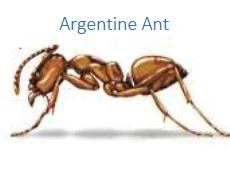
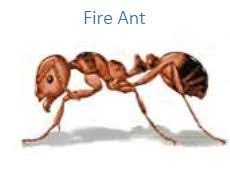
Fire ants are several species of ants in the genus Solenopsis. Imported fire ants are aggressive, reddish brown to black ants that are 1/8 to 1/4 inch long. The construct nests which are often visible as dome-shaped mounds of soil, sometimes as large as 3 feet across and 1 1/2 feet in height. In sandy soil, mounds are flatter and less visible. Fire ants typically build mounds in sunny, open areas such as lawns, pastures, cultivated fields, and meadow, but are not restricted to these areas.
Mounds or nest may be located in rotting logs, around trees and stumps, under pavement and building, and occasionally indoors. When their nests are disturbed, numerous fire ants will quickly run our of the mound and attack any intruder. These ants are notorious for their painful, burning sting that results in a pustule and intense itching, which may persist for 10 days.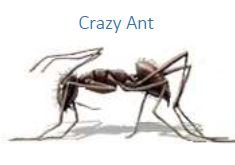
Crazy Ants, Paratrechina longicornis (Latreille), occur in large number in homes or outdoors. They often forage long distances away from their nests, so nests are often difficult to control. The name “Crazy Ant” arises from is characteristic erratic and rapid movement not following trails as often as other ants.
The crazy ant worker is relatively small (2.3-3 mm). They are dark brown to blackish (Creighton, 1950); the body often has faint bluish iridescence.
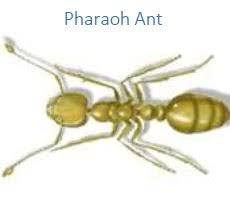
The Pharaoh Ant, Monomorium pharaonis (Linnaeus), may be the most difficult of all building-invading ants to exterminate. They have large colonies with multiple queens, nest almost anywhere within a structure, and will split large colonies into smaller ones at the slightest sign of stress.
Pharaoh Ants do not cause direct damage to the structures they inhabit, nor are they known to harm humans by biting or as disease carriers. They are a nuisance pest. Pharaoh Ants are very small. They do not exceed 1/12 inch in length. They are yellowish to reddish brown in color.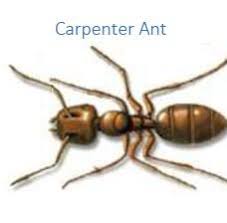
The Carpenter Ants, of the genus Camponotus, are known as carpenter ants because they house their colonies in galleries they excavate in wood. Carpenter ants do not eat the wood they remove during their nest building activities, but deposit it outside entrances to the colony in small piles. The wood is used solely as a nesting site. The galleries of carpenter ants are kept smooth and clean, and are not lined with moist soil as termite galleries are. Carpenter ants rarely cause structural damage to buildings, although they can cause significant damage over a period of years because nests are so long-lived.
Carpenters ants vary in size and color but are usually large (1/4-1/2 inch) and blackish. Occasionally, swarms of winged carpenter ant reproductive individuals will emerge inside a home. Carpenter ants swarms usually occur in the spring and are a sure sign that a colony is nesting somewhere inside the structure. *Not to be confused with termite swarms.*